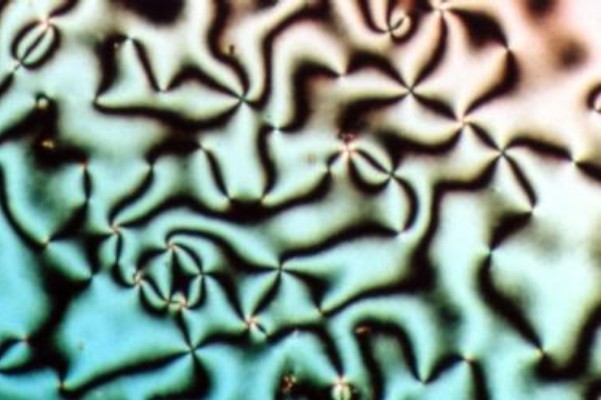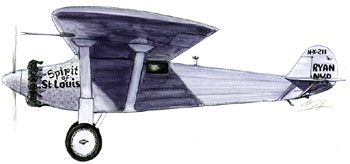|
Reinitzer
Friedrich Richard Reinitzer (25 February 1857 in Prague – 16 February 1927 in Graz) was an Austrian botanist and chemist. In late 1880s, experimenting with cholesteryl benzoate, he discovered properties of liquid crystals (named later by Otto Lehmann). Reinitzer was born into a German Bohemian family in Prague. He studied chemistry at the German technical university in Prague; in 1883 he was habilitated there as a private docent. From 1888-1901 he was a professor at Karl-Ferdinands-Universität, then professor at technical university in Graz. During 1909 - 1910 he served as the rector of the university. While at Karl-Ferdinands-Universität in 1888 he discovered a strange behaviour of what would later be called liquid crystals. For the explanation of their behaviour he collaborated with the physicist Otto Lehmann from Aachen. The discovery received plenty of attention at the time but no practical uses were apparent and the interest dropped soon. Selected works * F. Reinit ... [...More Info...] [...Related Items...] OR: [Wikipedia] [Google] [Baidu] |
Chemical Crystallography Before X-rays
Chemical crystallography before X-rays describes how chemical crystallography developed as a science up to the discovery of X-rays by Wilhelm Conrad Röntgen in 1895. In the period before X-rays, crystallography can be divided into three broad areas: geometric crystallography culminating in the discovery of the 230 space groups in 1891–4, Physical crystallography before X-rays, physical crystallography and chemical crystallography. Up until 1800 neither crystallography nor chemistry were established sciences in the modern sense; as the 19th century progressed both sciences developed in parallel. In the 18th century chemistry was in a transitional period as it moved from the mystical and philosophical approach of the alchemists, to the experimental and logical approach of the scientific chemists such as Antoine Lavoisier, Humphry Davy and John Dalton. Before X-rays, chemical crystallographic research involved observation using a goniometer, a microscope, and reference to Crystall ... [...More Info...] [...Related Items...] OR: [Wikipedia] [Google] [Baidu] |
Liquid Crystals
Liquid crystal (LC) is a state of matter whose properties are between those of conventional liquids and those of solid crystals. For example, a liquid crystal can flow like a liquid, but its molecules may be oriented in a common direction as in a solid. There are many types of LC phases, which can be distinguished by their optical properties (such as textures). The contrasting textures arise due to molecules within one area of material ("domain") being oriented in the same direction but different areas having different orientations. An LC material may not always be in an LC state of matter (just as water may be ice or water vapour). Liquid crystals can be divided into three main types: thermotropic, lyotropic, and metallotropic. Thermotropic and lyotropic liquid crystals consist mostly of organic molecules, although a few minerals are also known. Thermotropic LCs exhibit a phase transition into the LC phase as temperature changes. Lyotropic LCs exhibit phase transitions a ... [...More Info...] [...Related Items...] OR: [Wikipedia] [Google] [Baidu] |
Otto Lehmann (physicist)
Otto Lehmann (13 January 1855 in Konstanz, Germany – 17 June 1922 in Karlsruhe) was a German physicist and "father" of liquid crystal. Life Otto was the son of Franz Xavier Lehmann, a mathematics teacher in the Baden-Wurtemberg school system, with a strong interest in microscopes. Otto learned to experiment and keep records of this findings. Between 1872 and 1877, Lehmann studied natural sciences at the University of Strassburg and obtained the Ph.D. under crystallographer Paul Groth. Otto used polarizers in a microscope so that he might watch for birefringence appearing in the process of crystallization. Initially becoming a school teacher for physics, mathematics and chemistry in Mülhausen ( Alsace-Lorraine), he started university teaching at the RWTH Aachen University in 1883. In 1889, he succeeded Heinrich Hertz as head of the Institute of Physics in Karlsruhe. Lehmann received a letter from Friedrich Reinitzer asking for confirmation of some unusual observations. As D ... [...More Info...] [...Related Items...] OR: [Wikipedia] [Google] [Baidu] |
Cholesteryl Benzoate
Cholesteryl benzoate, also called 5-cholesten-3-yl benzoate, is an organic chemical, an ester of cholesterol and benzoic acid. It is a liquid crystal material forming cholesteric liquid crystals with helical structure. It can be used with cholesteryl nonanoate and cholesteryl oleyl carbonate in some thermochromic liquid crystals. It is used in some hair colors, make-ups, and some other cosmetic preparations. It can be also used as a component of the liquid crystals used for liquid crystal displays. Cholesteryl benzoate was the first material in which liquid crystal properties were discovered. In the late 1880s Friedrich Reinitzer, an Austrian botanist Botany, also called plant science, is the branch of natural science and biology studying plants, especially Plant anatomy, their anatomy, Plant taxonomy, taxonomy, and Plant ecology, ecology. A botanist or plant scientist is a scientist who s ..., while studying the chemicals in plants, heated cholesteryl benzoate. At 145 ... [...More Info...] [...Related Items...] OR: [Wikipedia] [Google] [Baidu] |
1927 Deaths
Events January * January 1 – The British Broadcasting ''Company'' becomes the BBC, British Broadcasting ''Corporation'', when its Royal Charter of incorporation takes effect. John Reith, 1st Baron Reith, John Reith becomes the first Director-General. * January 7 ** The first transatlantic telephone call is made ''via radio'' from New York City, United States, to London, United Kingdom. ** The Harlem Globetrotters exhibition basketball team play their first ever road game in Hinckley, Illinois. * January 9 – The Laurier Palace Theatre fire at a movie theatre in Montreal, Quebec, Canada, kills 78 children. * January 10 – Fritz Lang's futuristic film ''Metropolis (1927 film), Metropolis'' is released in Germany. * January 11 – Louis B. Mayer, head of film studio Metro-Goldwyn-Mayer (MGM), announces the creation of the Academy of Motion Picture Arts and Sciences, at a banquet in Los Angeles, California. * January 24 – U.S. Marines United States occ ... [...More Info...] [...Related Items...] OR: [Wikipedia] [Google] [Baidu] |
Karl-Ferdinands-Universität
Charles University (CUNI; , UK; ; ), or historically as the University of Prague (), is the largest university in the Czech Republic. It is one of the oldest universities in the world in continuous operation, the oldest university north of the Alps and east of Paris. Today, the university consists of 17 faculties located in Prague, Hradec Králové, and Plzeň. History Medieval university (1349–1419) The establishment of a medieval university in Prague was inspired by Holy Roman Emperor Charles IV. He requested his friend and ally, Pope Clement VI, to create the university. On 26 January 1347, the pope issued the bull establishing a university in Prague, modeled on the University of Paris, with all four faculties, including theology. On 7 April 1348 Charles, the king of Bohemia, gave to the established university privileges and immunities from the secular power in a Golden Bull and on 14 January 1349 he repeated that as the King of the Romans. Most Czech sources since th ... [...More Info...] [...Related Items...] OR: [Wikipedia] [Google] [Baidu] |
Prague
Prague ( ; ) is the capital and List of cities and towns in the Czech Republic, largest city of the Czech Republic and the historical capital of Bohemia. Prague, located on the Vltava River, has a population of about 1.4 million, while its Prague metropolitan area, metropolitan area is home to approximately 2.3 million people. Prague is a historical city with Romanesque architecture, Romanesque, Czech Gothic architecture, Gothic, Czech Renaissance architecture, Renaissance and Czech Baroque architecture, Baroque architecture. It was the capital of the Kingdom of Bohemia and residence of several Holy Roman Emperors, most notably Charles IV, Holy Roman Emperor, Charles IV (r. 1346–1378) and Rudolf II, Holy Roman Emperor, Rudolf II (r. 1575–1611). It was an important city to the Habsburg monarchy and Austria-Hungary. The city played major roles in the Bohemian Reformation, Bohemian and the Protestant Reformations, the Thirty Years' War and in 20th-century history a ... [...More Info...] [...Related Items...] OR: [Wikipedia] [Google] [Baidu] |
19th-century Austrian Botanists
The 19th century began on 1 January 1801 (represented by the Roman numerals MDCCCI), and ended on 31 December 1900 (MCM). It was the 9th century of the 2nd millennium. It was characterized by vast social upheaval. Slavery was Abolitionism, abolished in much of Europe and the Americas. The First Industrial Revolution, though it began in the late 18th century, expanded beyond its British homeland for the first time during the 19th century, particularly remaking the economies and societies of the Low Countries, France, the Rhineland, Northern Italy, and the Northeastern United States. A few decades later, the Second Industrial Revolution led to ever more massive urbanization and much higher levels of productivity, profit, and prosperity, a pattern that continued into the 20th century. The Catholic Church, in response to the growing influence and power of modernism, secularism and materialism, formed the First Vatican Council in the late 19th century to deal with such problems an ... [...More Info...] [...Related Items...] OR: [Wikipedia] [Google] [Baidu] |
Academic Staff Of Charles University
An academy (Attic Greek: Ἀκαδήμεια; Koine Greek Ἀκαδημία) is an institution of tertiary education. The name traces back to Plato's school of philosophy, founded approximately 386 BC at Akademia, a sanctuary of Athena, the goddess of wisdom and skill, north of Athens, Greece. The Royal Spanish Academy defines academy as scientific, literary or artistic society established with public authority and as a teaching establishment, public or private, of a professional, artistic, technical or simply practical nature. Etymology The word comes from the ''Academy'' in ancient Greece, which derives from the Athenian hero, ''Akademos''. Outside the city walls of Athens, the gymnasium was made famous by Plato as a center of learning. The sacred space, dedicated to the goddess of wisdom, Athena, had formerly been an olive grove, hence the expression "the groves of Academe". In these gardens, the philosopher Plato conversed with followers. Plato developed his sessions ... [...More Info...] [...Related Items...] OR: [Wikipedia] [Google] [Baidu] |
Czech Technical University In Prague Alumni
Czech may refer to: * Anything from or related to the Czech Republic, a country in Europe ** Czech language ** Czechs, the people of the area ** Czech culture ** Czech cuisine * One of three mythical brothers, Lech, Czech, and Rus *Czech (surname) *Czech, Łódź Voivodeship, Poland *Czechville, Wisconsin, unincorporated community, United States See also * Čech, a surname * Czech lands * Czechoslovakia * List of Czechs * * * Check (other) * Czechoslovak (other) * Czech Republic (other) The Czech Republic The Czech Republic, also known as Czechia, and historically known as Bohemia, is a landlocked country in Central Europe. The country is bordered by Austria to the south, Germany to the west, Poland to the northeast, and ... * Czechia (other) {{disambiguation Language and nationality disambiguation pages ... [...More Info...] [...Related Items...] OR: [Wikipedia] [Google] [Baidu] |
1857 Births
Events January–March * January 1 – The biggest Estonian newspaper, ''Postimees'', is established by Johann Voldemar Jannsen. * January 7 – The partly French-owned London General Omnibus Company begins operating. * January 9 – The 7.9 1857 Fort Tejon earthquake, Fort Tejon earthquake shakes Central California, Central and Southern California, with a maximum Mercalli intensity scale, Mercalli intensity of IX (''Violent''). * January 24 – The University of Calcutta is established in Kolkata, Calcutta, as the first multidisciplinary modern university in South Asia. The University of Bombay is also established in Mumbai, Bombay, British India, this year. * February 3 – The National Deaf Mute College (later renamed Gallaudet University) is established in Washington, D.C., becoming the first school for the advanced education of the deaf. * February 5 – The Federal Constitution of the United Mexican States of 1857, Federal Constitution of ... [...More Info...] [...Related Items...] OR: [Wikipedia] [Google] [Baidu] |






